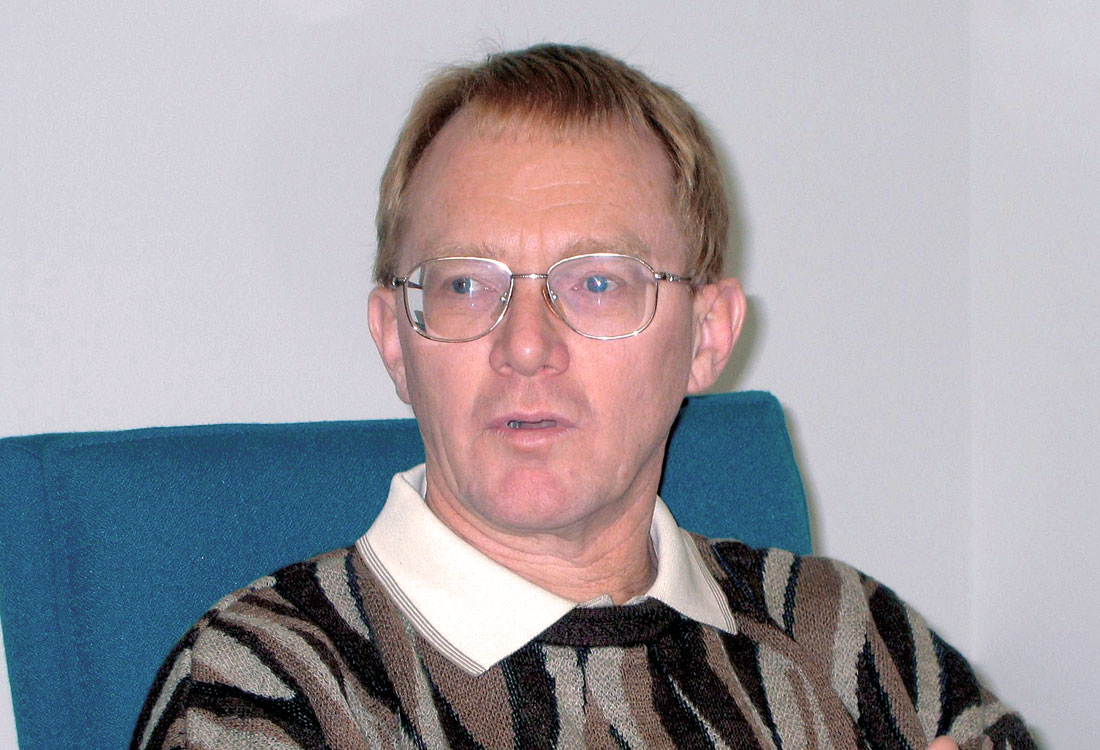
As a 25 year employee with Canadian Hunter / Burlington, Frank Van Humbeck was initially somewhat reluctant to be interviewed by the RECORDER. Satinder Chopra, Vince Law, and Jason Noble were able to persuade him to share some of his observations on his career so far.
[Satinder]: Frank, let us begin by asking you about your educational background and your work experience?
I grew up on a farm in central Alberta, near Rimbey, and graduated from high school in 1968. I then went on to the University of Alberta, and graduated from there with a Bachelor of Science degree. I originally started in pure physics and math. When you come from a small town, you know what engineers do, what teachers, nurses and doctors do, but geophysics, what’s that? The embarrassing thing is that I could have gotten an APEGGA scholarship in first year if I had been studying engineering, geology or geophysics. I didn’t even know what a geologist or geophysicist did. When I got to third year the classes were all quantum mechanics, and special relativity and electromagnetic theory. The U of A in particular was, and still is, a very theoretical school.
One day I was in manpower looking for a summer job. At that time companies were recruiting for nuclear physicists, which you needed a Ph.D. for, and geophysicists. I didn’t think I wanted to stay in school long enough to get a Ph.D., so in my third year I switched to geophysics and really had no idea what I was getting into. I graduated in 1972 and was hired by Amoco. I worked at Amoco for six and a half years, until the end of 1978. At Amoco I started off doing seismic processing with another tech. I did that for six months or so, and then got a project where I did the processing and interpretation. The rest of my time there was pretty well entirely interpretation apart from about a year I spent doing some special project work. It was a bit of processing and some liaison work with the research lab in Tulsa.
In 1978 I moved to Canadian Hunter when they were just starting their geophysics group and have been at Canadian Hunter ever since, although it’s now Burlington. I have recently been recognized as a 25 year employee, which for the industry, even staying at one company for 25 years, or having one company survive for 25 years, is a bit of an anomaly. When the NEP came in, Can Hunter like everyone else decided we should explore in the US. I started working on the US projects and worked these projects from about 1980 to about 1986. We lived in Denver from the fall of ’83 to the spring of ’86. I came back to Calgary to be the Chief Geophysicist, and have had that title pretty well ever since. The size of the group has changed depending on the fortunes of the industry and the company. Over the years the company moved towards asset teams and business units. Some years you do more interpretation work and some years you do more paperwork. This year seems to be more paperwork.
[Satinder]: How did you come to decide to leave Amoco and move to Canadian Hunter?
At the time, I think I was just looking for a change. There was an ad in the paper for Canadian Hunter. I was working for Amoco in the Grande Prairie region where Hunter had several discoveries and I replied to the ad. I sketched out the skuzziest looking resume, figuring it would get their attention if they were interested. The Chief Geophysicist at the time was a guy named Tai Ng. Tai was out of Shell with a really strong technical background. I felt at the time that I could learn a lot from Tai, plus they gave me a big raise. It wasn’t that I was displeased with Amoco. I had replied to the ad on a whim, and after meeting with Tai and the Hunter team I decided to move. It was kind of the cycle at the time. The big companies trained you to do processing and interpretation but there were so many start up companies a lot of people left the majors.
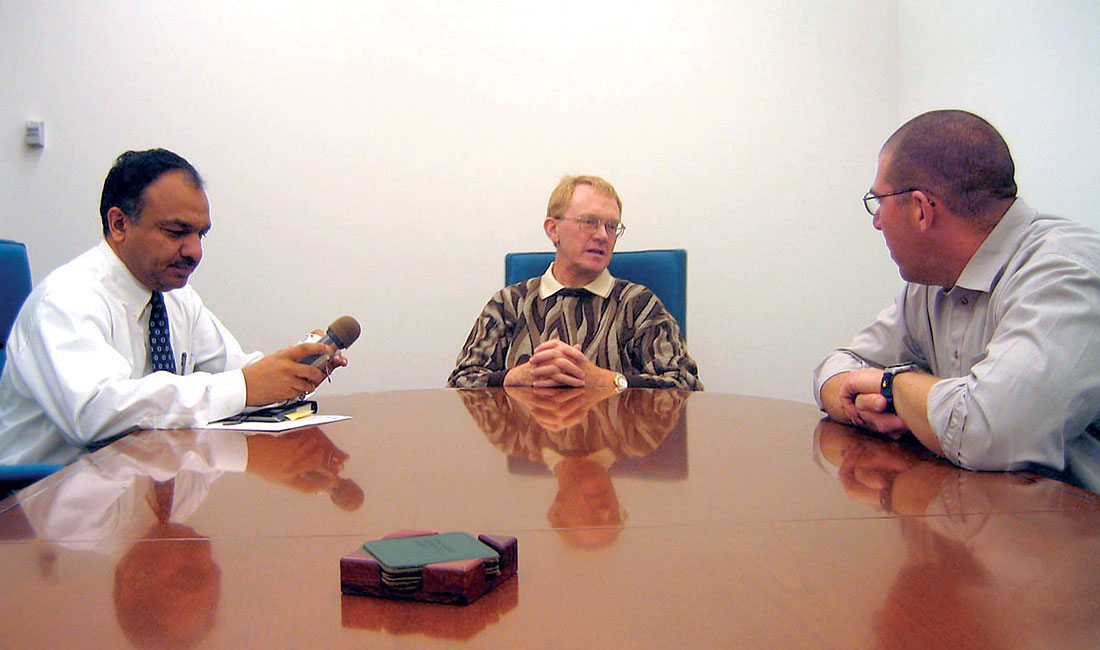
[Satinder]: How did you find living in Denver as compared to Calgary?
The thing that was interesting working in the US is that I got a much larger variety of plays. In the Western Canada basin I had worked either carbonates or clastics. In the clastics, whether you’re working Peace River arch or Northeast Alberta, call it the Glauconite, call it the Viking, call it the Paddy, you’re essentially working the same play. It’s intensely stratigraphic. Even a lot of the carbonate plays are stratigraphic in that you a re trying to map porosity. When I got into the US basins, I found it was a really challenging experience. Hunter at that time was looking for the elephants. The US boom was such that if you took a deal in the main producing trends and drilled a discovery you still lost money because there were so many overrides. We were exploring in the Washington basin under the basalts. We did a bunch of work on the deep California turbidite trends. A lot of the Rocky Mountain basins we worked were very intensely folded. I worked in the Eastern Indiana basin looking for reefs. It gave me a big variation in plays and that helps a lot in that you look at plays with a different background. The variation in the plays we were working at the time was a lot of fun. If you’re an exploration person, it’s fun to do the big high risk exploration projects. Your success rate certainly is lower. It was a good experience for me. The cities, it’s like living in the same city. The climate is nicer in Denver; you get two more months of summer, and two less of winter.
[Satinder]: You mentioned earlier you decided to go into geophysics in your third year of University; was there anything more to it than that?
I decided to go into geophysics because I recognized that pure theory and continuing on to a Masters or Ph.D. was not something that I wanted to do. Geophysics seemed to be a field where you could get a job. It’s worked out well, I am enjoying my career. It’s a fun job even though I didn’t have a clue what I was getting into, back in university.
[Satinder]: Looking back, have you ever thought what you would have ended up doing if not geophysics?
When I went to university I looked at a couple of schools, and applied to two; the University of Alberta in physics, and Queens for engineering. I got a letter fro m the U of A offering some scholarship money, and as my parents were unable to help me financially, I decided to go there. Plus it was closer to home. If I hadn’t taken geophysics, I probably would have taken engineering. Geophysics has suited me very well because it’s a problem solving type career.
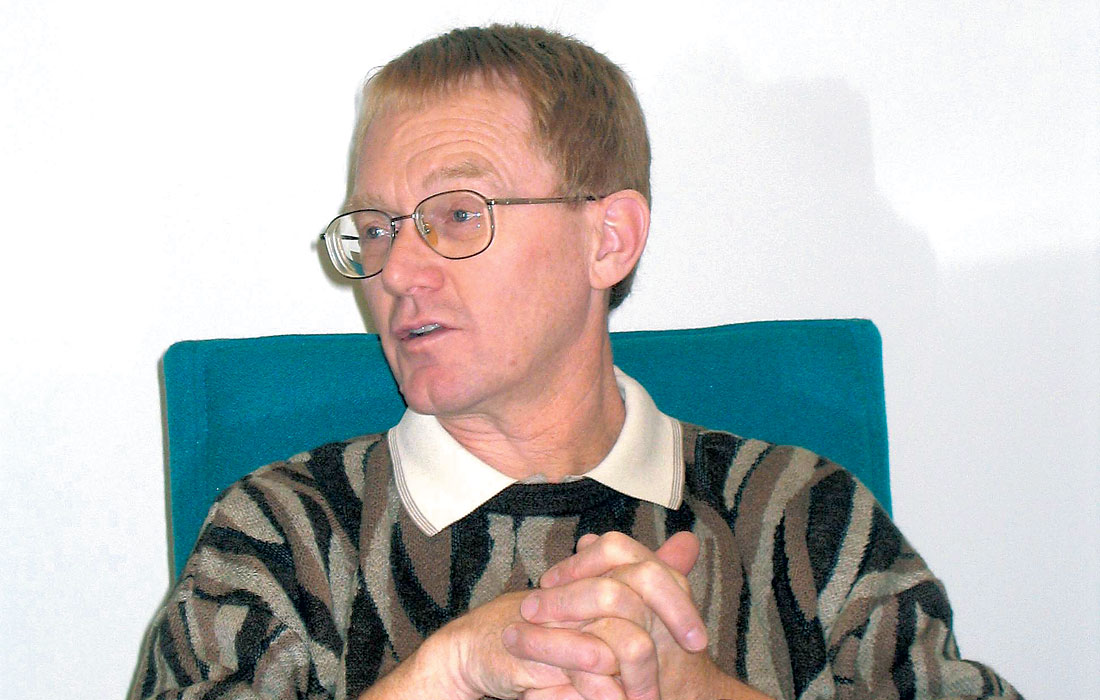
[Satinder]: You have been from Amoco to Canadian Hunter and now Burlington. What changes have you seen in the work culture ?
It was interesting seeing the differences going from Amoco to Canadian Hunter in that Hunter was a much smaller company and they had very small independent teams. Being at Burlington now is more like it was at Amoco in that Burlington is a big company. There is more planning, more reporting, whereas in a smaller company you are more independent. The big companies of today are still distinct from the big companies of the 70s which were functionally organized. The philosophy now, even in the big companies, is to work in smaller teams similar to the smaller companies. When you get the whole team together, geologists, geophysicists, engineers, all working together, you get much better results. You can see how each discipline will impact the play, as compared to each working independently, where you lose that context. There really isn’t that much difference between Burlington today and Canadian Hunter 2 years ago. The sheer number of people is greater, but the structure and function of the asset teams is essentially the same.
[Satinder]: You have been in the same company for almost 25 years, what do you see as the secret to surviving in this industry with the same company for that long?
I think what has worked for me has been that I have tried to stay focused on the technical aspects of the job. I’ve had the opportunity with Hunter to work on a great variety of plays and found that that kept my interest. There always seemed to be something that was interesting to do.
[Jason]: What is the most interesting part about being the chief geophysicist here ?
The best part about being the chief geophysicist is I get to see most of the plays the company is working on. You spend time with the geophysicists and get to see what they are working on. The technical side is what I find the most interesting.
[Jason]: The paperwork…
The paperwork I could do without. Unfortunately it seems that consumes most of my time. This past year at Burlington I have also been involved with trying to rationalize our software, and that consumes a lot of time. It generates very strong opinions from people. When we first merged I don’t think we had two pieces of software the same. Our PC’s wouldn’t talk to each other. We both happened to be on SEIS-X at the time, but our data management structures were totally different. Hunter was on SGI workstations, Burlington was using Sun and Houston is a Landmark shop. As far as mergers go this has been pretty smooth. Mergers have a tendency to become “us and them”, with two equal sized companies. Burlington did an excellent job of preventing that, and bringing everyone together. The attrition has been quite low, and mostly what you would expect in this size a company. Even at Hunter, with 300 people, there were some who felt it was getting too big.
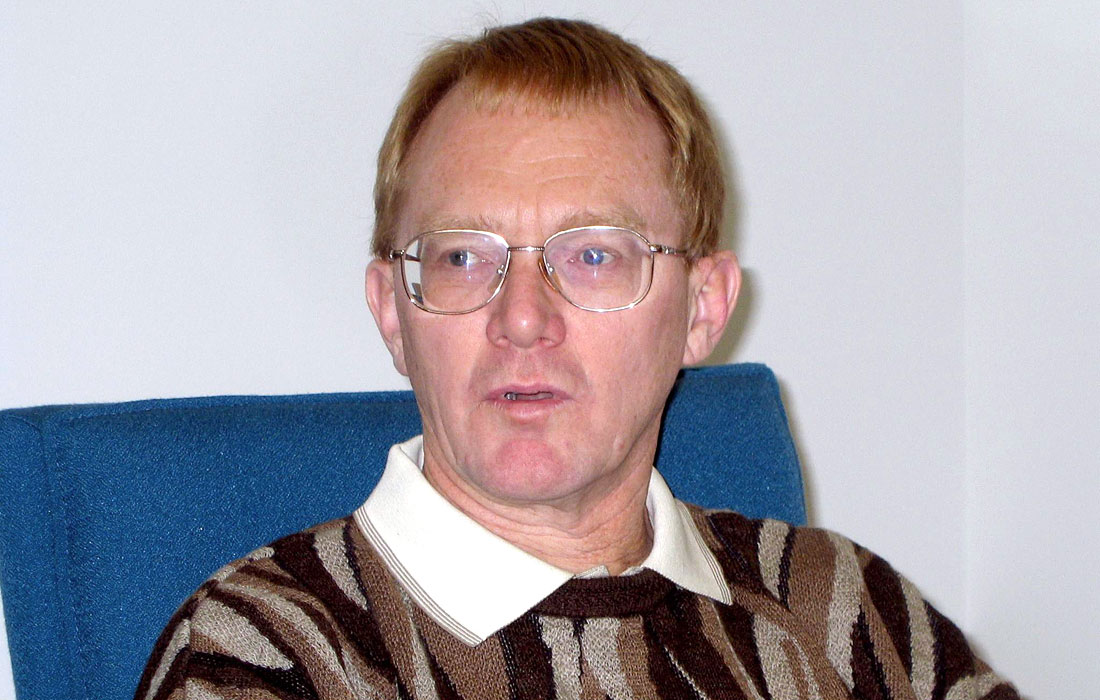
[Satinder]: For people just coming into the industry, what do you see as the essential requirements for a new geophysicist?
When I look at hiring a new geophysicist I look for someone who is smart. Somewhere in the resume I am looking for an academically strong person. They may have their ups and downs or areas where they are weak, but I still want to see some good academic success. Next is a good work ethic. We have started to take on summer students over the past few years, and this is probably the best way to evaluate hard work. The last one is the ability to work within a team. This is probably the hardest one to judge.
[Jason]: How active has Burlington been able to stay through the merger, over the last couple of years?
We have actually been extremely busy, particularly on the drilling side. One thing I really give Burlington credit for is having bought Hunter, they then bought the ATCO property, and while carrying a large debt, still decided to increase drilling. We increased production and with the high gas prices, things worked out really well. On the seismic side we haven’t done as much. We have been doing a lot internally. Hunter had purchased a couple of the huge databases, and combined with the original Burlington data, our seismic database is huge. Our biggest challenge has been sorting it out and getting it all on one map.
[Satinder]: Frank, would you like to share with us the most memorable moment in your professional life? This one takes some thought.
The most memorable moments are probably where I’ve drilled wells and had successes or failures. One of the ones I remember, we were drilling a deep well in California. We mapped this great big structure and I forget what the depth was, 17,000 or 18,000 feet. So we started drilling and hit the over pressured zones; did some logging, and you discover that in over pressured shale the velocities go really low. I started thinking, “I wonder if my depth estimate is right?” Fortunately we had some tight sands that brought the velocity back up, and I breathed a big sigh of relief. When we finally hit the target we ran a drillstem test, and it was one of those where you thought you had a gas well but it depleted rapidly. We just didn’t have the porosity. It’s the big projects that are the most memorable.
[Satinder]: What was the most challenging project that you worked on?
The most challenging ones are sometimes technical successes but not commercial. We were exploring in the Mississippi Enbayment. It runs up into Tennessee along the Mississippi River. The challenge there was that we took a land deal before we looked at the seismic. We had about 500 to 1500 feet of Tertiary that sat on top of Ordovician carbonates. The velocities went from 5000 ft/sec to 25000 ft/sec; all we saw was a big chain of multiples and we were looking for deep structures. We worked with that data for a year or two; tried modeling, acquired some long offset data, and managed to map out some structures, but didn’t pursue drilling them. The biggest technical challenges recently have probably been in the deep basin where I have been trying to map the reservoirs in between all the coals.
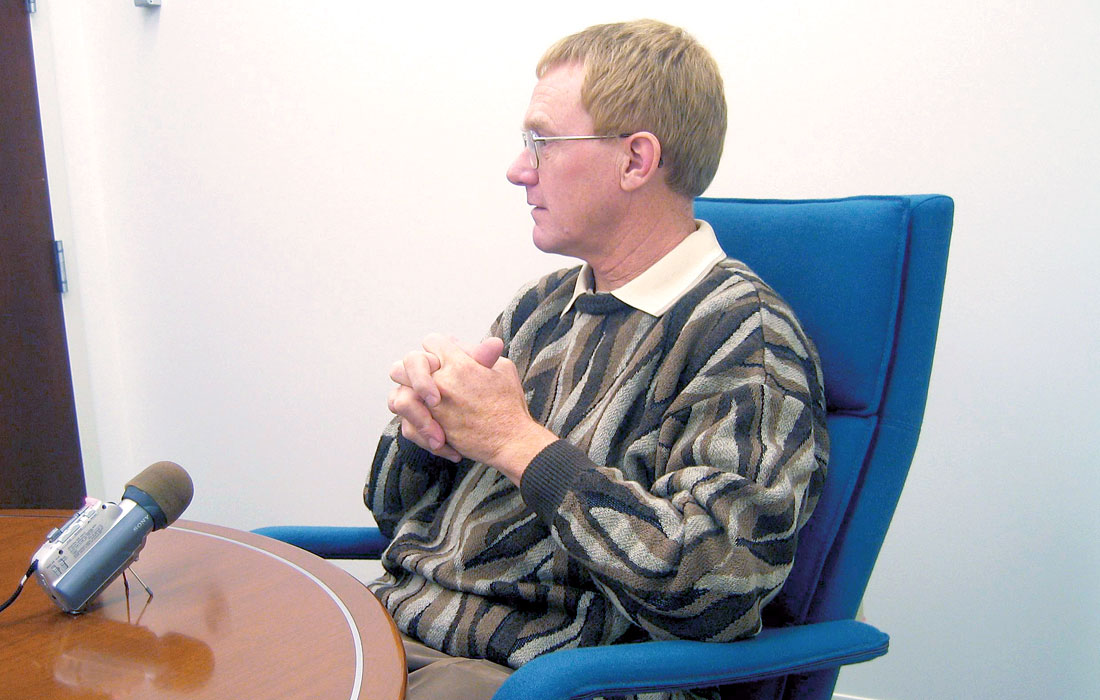
[Jason]: Where in Canada is Burlington active right now?
Our biggest core properties and our biggest activity a rea is the whole wedge of Cretaceous sediments down in front of the foothills. That’s probably 60% of our effort. These properties are Grande Prairie, BC deep basin, Kaybob, going south towards Edson, and O’Chiese. In a lot of the plays the sands and porosity are just detectable, they are too thin to resolve. Some of the work now is trying to get fairly big 3D coverage, which is a challenge given the cost. Then we try to map the data looking for similar patterns and trends, more what I think the geology looks like. I think the future going forward is to do even more intensive work with these big 3Ds. The cost is high but in certain areas it is economic even to shoot it alone. I think we are getting a much different picture from these big 3Ds than the traditional approach of looking at the 2D then shooting a small 3D over the anomaly. You can’t get a picture of the regional trends in the small 3Ds. It’s difficult to really quantify what you gain, but I think over time it will prove out. The challenge we have is paying for it.
[Satinder]: Tell us about some of the new technologies you have been adopting in your interpretation?
Part of it is moving forward with some of the attribute analysis, more than just looking at amplitude to look at the waveforms. We have to do more of that. We need to see what you get out of the AVO, the offset changes. We need to look at converted waves. We haven’t done a great deal of that. Maybe it’s how busy we are; when you get busy you tend to do things in a traditional way. A lot of that works. I think we have to push harder, particularly on the add-on stuff, the attribute analysis and those sorts of things.
[Jason]: Do you think there is anything big left to find in Western Canada?
Yes I do. Big in terms of reserves and production, I think so. I think it’s going to be in more wells and more challenging wells rather than a Redwater, that’s a billion barrels in a single field. No I don’t think we’re going to find any of those. We are going to find tough stratigraphic plays in both carbonates and clastics. A lot of our big results are going to come from drilling lots of wells in tighter rock. From working in the US, you see that they are a level of order ahead of us in development and that is their trend. Yo u look in Alberta and BC and there are lots of wells, but start cutting it by depth and there are a lot of areas where there is only a well per township. It’s not going to be easy as the easy ones are already picked off. I do think there is still lots of potential for the Western Canada sedimentary basin.
[Satinder]: You are working as chief geophysicist here, do you think there is more to achieve and where do you go from here?
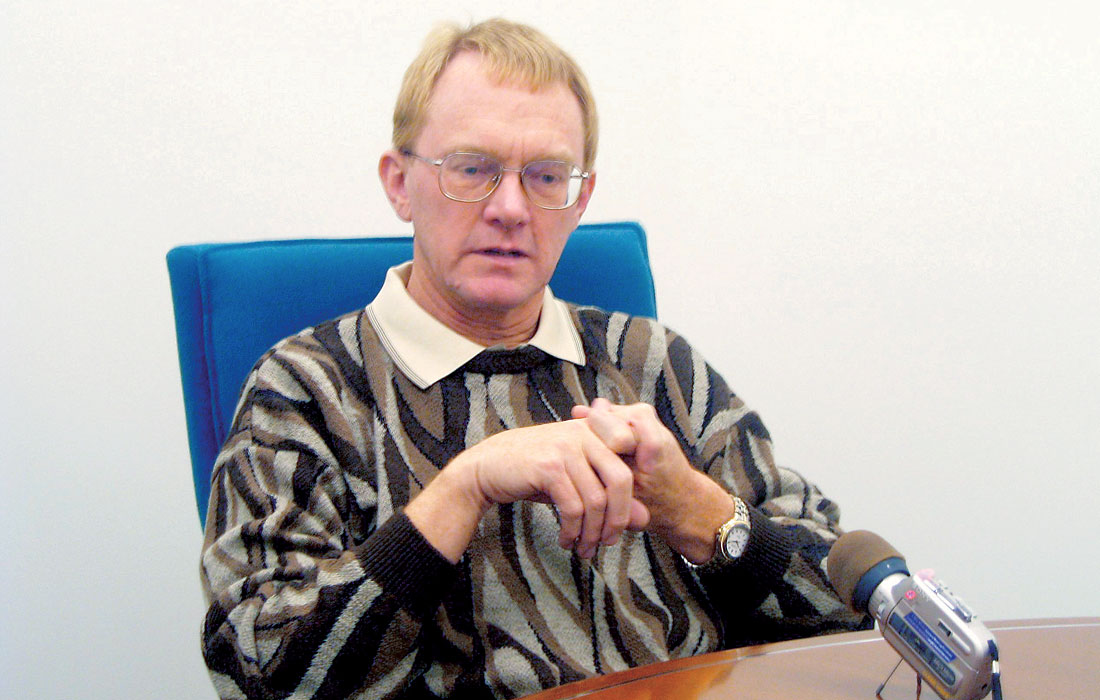
For me, I think there is more to achieve at Burlington. What I have to do, is bring in more of these new technologies, and find more of these plays where we can bring geophysics to bear and make an impact. The challenge of the chief geophysicist’s job is to try getting the whole group acting as a group, and to improve our technology. You build the asset teams, they get on separate floors, and then the geophysicists don’t even see each other. That’s what I take as the challenge here. Personally I’m really trying to figure out what I want to do. I’m early 50’s now, 53, but I’m not in a real rush to retire. At the same time I’m at the age where I start asking myself what I would do if I retired. My wife says I don’t have any hobbies and as I start considering retirement I need to consider how I will spend my time.
[Satinder]: Who were some of your mentors as you moved ahead in your professional life?
Going all the way back to Amoco there was Stu Colbourn, my first supervisor. I still see Stu at the Y. Jack Cameron hired me. He was the chief geophysicist at Amoco. I worked for Easton Wren for a couple of years in there. Then when I came to Hunter, Tai Ng was a big influence on me. He was a brilliant technical guy. Technically I learned a lot from him. Geophysically those are probably the guys I learned from in my early years. Now I just know more than all the rest of them (laughter).
[Satinder]: What would be your message for young people getting into our industry?
Number one, you have to be prepared to come in and work hard. The other thing is to focus on the technical aspect of the job. That’s what is going to stand you through everything as the Canadian industry has been very turbulent. If you look at the people you meet over the years, the people who have a strong technical focus are not out of jobs for very long. At Hunter we had layoffs on a Tuesday and by Friday some of the guys were working again. I think you are going to be successful if your focus is on doing a good technical job.
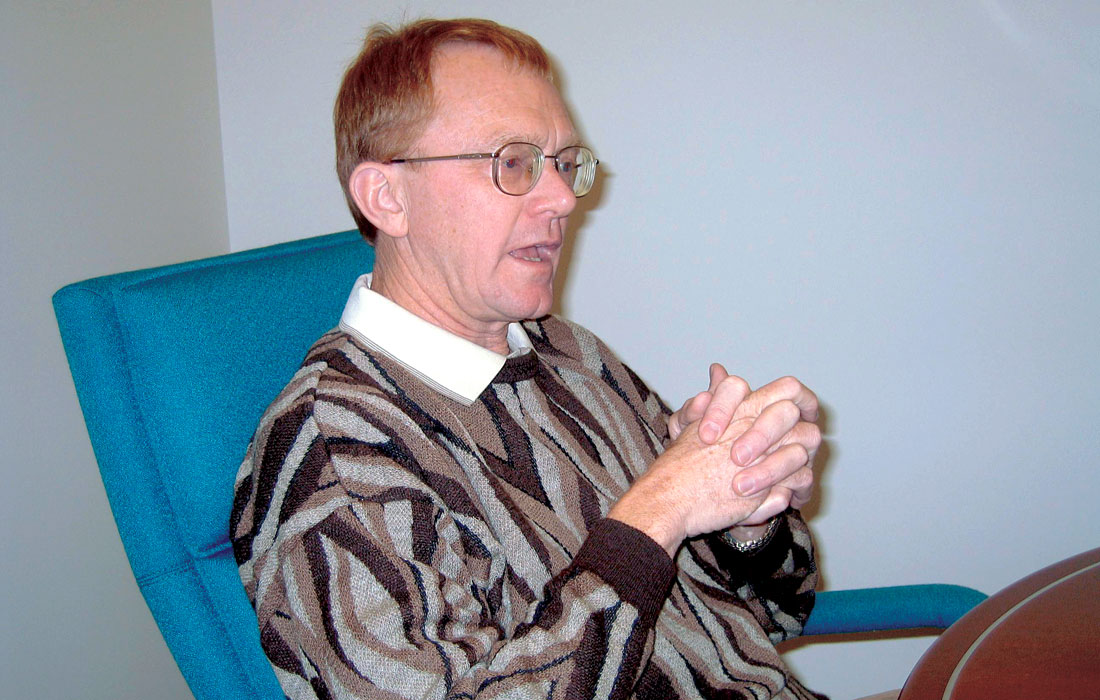
[Satinder]: What sort of activities do you do outside work?
Historically I have done a lot of volunteer work almost exclusively in what my kids were doing. My wife and I are the personality types that when we get involved in activities, we end up running them. When our sons were in school we were involved in the music programs at both the Junior and Senior high school and both were almost full time jobs. We have also been very active with the volleyball clubs in the city and we continue to be involved with the Alberta Volleyball Association. This year, we will have 208 teams of 15 and 16 year old boys and girls competing on 26 volleyball courts at the University of Calgary on the May long weekend. We will be responsible for overseeing all the score keeping at this tournament which is the Western Canadian Championships. I also play a lot of golf over the summer. Not 70 or 80 rounds but 30 or 40 rounds. I used to ski in the wintertime but I haven’t skied much in the last few winters. Both of our sons are in university now. Our oldest is doing his masters in ecology and our youngest is in his third year of organic chemistry. I still give them a hard time about not being in physics but they love what they are doing. Going back a couple of questions, I believe you will be successful if you really love what you are doing, and they have both found different fields of science which they love.
[Satinder]: Thank you very much for your time Frank.
You’re very welcome.











Share This Interview